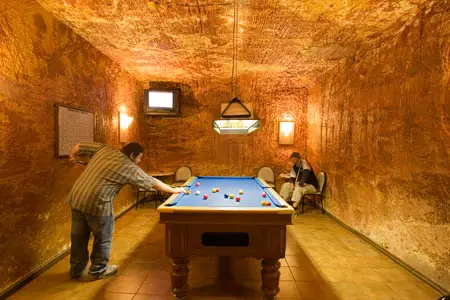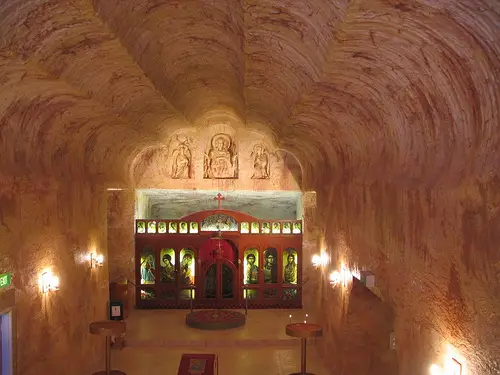This section allows you to view all posts made by this member. Note that you can only see posts made in areas you currently have access to.
Topics - _noXiouS_
Pages: 1 2 3 4 [5] 6 7 8 9 10 ... 20
81
« on: October 19, 2011, 10:15:57 AM »
Supposedly, it's random. However, I really see no randomness with it. Majority of the time it's the same group of people who are able to access this option. This has been ongoing for now a month? Yet, majority of the people on the site have had no access to it.
Is it set, to only chose users at a certain time of the day? Still, it makes no sense, in how it's randomising.
82
« on: October 18, 2011, 03:24:50 PM »
83
« on: October 16, 2011, 09:32:16 PM »
Boredom is that state of mind where the person is likely to experience a large amount of discontent as well as disinterest. There are very few things which are likely to pique the interest or curiosity of the person and create some kind of excitement when he is going through the stage of experiencing boredom. A lot of scientists are conducting research and analysis into the state of mind of the person and the activity which takes place inside the brain when he is undergoing, the state of boredom.
The latest hypothesis in the field indicates the presence of a dopamine receptor which will decide the exact amount of stimulation which will be required for a normal individual. Some people have neurons which have a smaller amount of D2 receptors. The curiosity levels in these people will be extremely high. The deficiency of these D2 receptors in people is a genetic condition. These people have to take a lot more effort to generate the required amount of dopamine.
Boredom can be classified into two main categories namely situational boredom and chronic boredom. Situational boredom is when a person experiences boredom on encountering a certain specific situation or series of events. Such situations could include when a person gets bored while reading a specific book or watching a certain movie or listening to a lecture in a hall or a classroom. Chronic boredom is a state of mind which will be experienced most of the time irrespective of the time and the place. This state of mind can prove to be dangerous and fatal to the person who is undergoing this specific condition. People who are suffering from chronic boredom will even get bored with people who are a permanent part of their lives like a spouse, parents or even children. 
84
« on: October 16, 2011, 09:17:25 PM »
Let's welcome the kid to the team. We often find him wandering in the sports section. Nonetheless, hope this helps in your endeavors on PJ. So, enjoy the new editing rights.
85
« on: October 16, 2011, 09:10:44 PM »
Ashfaq has done such a good job with moderating the chat, so, we have decided to give him additional rights by making him a Global Moderator. It will help him take care of PJ more efficiently. As, once, a very wise man said "with great power comes great responsibility" :hehe: So, let's take it as such. One thing I would like to point out to ashfaq again ke bai thodi patience da vartao karo with users. Kaahli vich koyi decision na layo unless absolutely called for... chalo bai sare mundey nu vadahyia dao and I hope everyone will cooperate with him to run PJ in a clean manner.
86
« on: October 13, 2011, 03:36:48 PM »
What kind of clothes do you like on a guy/girl? Which style you don't like?
...
Guys:
Likes
Pant suits w/ ties
Dress shirts with vests and pants
boots - like timb's or the sort...
kurta/pajama with parrna *droool*
leather jackets
Heavy watches - like rolex of the sort...
Plain White T's/Polos
Guy who can pull off the color pink in a shirt :love:
Dislikes
shirts tucked in jeans
dress shoes with jeans
tight pants/shirts
bomber jackets
hats
Sleeveless Shirts
Low Hanging Jeans
87
« on: October 13, 2011, 01:50:38 PM »
1. Pepperidge Farm Soft Bread: Pole vault mat   Advertising School: Miami Ad School 2. Nike Football    Was that a BMW 7 series? Must be an expensive installation. (Advertising Agency: unknown) 3. Wrigley’s Orbit Ice Mints: Fresh Breath  The installations were an instant motive of interest for photographers, intriguing many tourists; becoming an attraction of their own. Following the success and attention generated, further installations are planned in various ski locations around Austria. (Advertising Agency: PKP BBDO, Vienna, Austria) 4. FedEx Kinko    Advertising agency: BBDO, New York, USA 5. Mondo Pasta: Boat   To get Mondo Pasta on everyone’s mind, Jung von Matt, advertising agency from Germany created a bigger than life promotion at the most frequented place in Hamburg: the harbor. Huge stickers of faces turned ships into permanent pasta slurpers. (Advertising Agency: Jung von Matt, Germany) 6. Bic Razor: Billboard  Advertising agency: Unkown 7. Pantene Anti-Breakage Shampoo  Advertising Agency: Grey Canada, Toronto 8. Rodenstock Eyewear: Giant Banana Peel   A sculpture made by the Berlin artist Stefan von Essen which looks like a giant banana peel, was set in various shopping malls. Wearing bifocal glasses by Rodenstock you can’t overlook a slippery banana peel on the street. (Advertising Agency: Serviceplan, München/Hamburg, Germany) 9. Anti-smoking: Big Smoke  A car, crushed by a 7-foot cigarette, grabbed attention for National Non-Smoking Week and the British Columbia Lung Association. The car was placed at the Vancouver Art Gallery and used let people know that each year several thousand British Columbians die from smoking-related causes, while only a few hundred die in car accidents. (Credit: Smak, Vancouver) 10. Alliance Theatre: Pick  To promote the Alliance Theatre’s production of Cuttin’ Up, a play about the culture of the African-American barber shop, BBDO Agency created a guerilla campaign based on a classic icon that figures prominently in the play – the afro pick. (Advertising Agency: BBDO Atlanta, USA) 11. Terminix: Fries  Termites Eat 24 hours a day. (Advertising Agency: Publicis Dallas, USA) 12. Lego: Crane  As building companies in Chile don`t work on weekends, the guys at IDB-FCB decided to use the best located cranes on one most influential places of Santiago city as an ambient for Lego. The action consisted of hanging a giant fictitious Lego block from a crane. (Advertising Agency: IDB-FCB, Chile) 13. Woodland: Climbing Shoes  “Climbing Shoes” (Advertising Agency: unknown) 14. Tennis Masters Cup: Racket  The fastest server generate over 560 Newtons. Enough force to propel a human skywards. Experience the best tennis at the tennis masters cup 2006. (Agency: TBWA, Shanghai, China) 15. Rimmel Quick Dry Nail Polish: Fast  Advertising Agency: JWT London 16. Tibits Vegetarian Restaurant: Fork  Very, very fresh vegetarian food. (Advertising Agency: Wirz/BBDO Switzerland) 17. Nike Ball  Advertising Agency: unknown 18. McDonald’s: Massive McMuffin Breakfast  Massive McMuffin Breakfast. Now being served (Advertising Agency: DDB, New Zealand) 19. Dulcolax: Toilet paper  Dulcolax is a stimulant laxative. (Advertising Agency: Euro RSCG, Dusseldorf, Germany) 20. Siemens Mixer  Advertising Agency: unknown 21. Havaianas: Flower Beds   In an effort to push Havaianas’ floral-print flip-flops, flower-bed installations were planted in locations where they were sold. They also served to remind people of Havaianas’ unique aesthetic of color, design, and the brand’s connection to nature and the outdoors. (Advertising Agency: BBDO New York, USA) 22. Penline Stationary: Strong Tape  Advertising Agency: Euro RSCG, Kuala Lumpur, Malaysia 23. Gorge Grown Farmers Market  Advertising Agency: Owen Jones & Partners, Portland, OR, USA 24. Extremely Long Brush. Extremely Long Lashes  Advertising Agency: Saatchi & Saatchi Canada 25. Moserbaer: USB Truck  Mega storage capacity. (Advertising Agency: TBWA, Gurgaon, India) 26. McDonald’s: Pole  McDonald’s free coffee promotion. (Advertising Agency: Cossette West, Canada) 27. Zwilling Knives  To illustrate, that Zwilling produce very sharp knives, a giant mock-up was placed on top of street lamp posts to create an illusion that the knife can even slice through steel. (Advertising Agency: BATES MALAYSIA, MALAYSIA, Kuala Lumpur) 28. Formula Toothcare: Toothpicks   Advertising Agency: Ogilvy & Mather, Jakarta, Indonesia 29. Martor Solingen: Extremely Sharp  Advertising Agency: unknown 30. Smart: Giant Bike Lock & Shoehorn  
88
« on: October 10, 2011, 03:33:55 PM »
We explored what living underground offers and we found that it is not as bad as it sounds. Living underground resolves various problems that humans face today such as energy efficiency, comfortable temperature, hideout from extreme temperatures, life without noise, natural shelter from wars, tornados and hurricanes. Two problems that we stumbled across were flooding and of course lack of sunlight. Flooding can be solved with water pumps, but it seems that is impossible to penetrate sun rays through the ground. There is a town in South Australia called Coober Pedy, where people found that living underground can be great alternative for their needs. There are times when temperatures in Coober Pedy reach an amazing high of 43 degrees Celsius (109 F). These temperatures are very uncomfortable for a normal human being and can lead to various skin diseases. The people here try and avoid the sun by living underground during this period. This area is commonly referred to as the opal capital of the world. One finds homes, churches and even hotels in the disused shaft mines. The area, as expected, has become a tourist attraction. People travel long distances to come and see this amazing place. The town relies heavily on the income that they get from tourism just as much as they rely on the income that they get from opal mining. The area also boasts of being the only place that has got an underground bar. So for those that love drinking beer you will have an amazing experience drinking it from below. Interestingly there is a underground Serbian Orthodox church in Coober Pedy. Serbian miners built it for their own religions needs.  
89
« on: October 10, 2011, 02:50:27 PM »
90
« on: September 28, 2011, 06:25:53 PM »
Most of the world’s castles, dating back as far as the dark ages, have crumbled into ruin. But there are still many of these daunting stone fortresses and palaces that live on in a new way – as homes, hotels, museums, universities and even bookstores. These 13 converted castles from the 10th to 19th centuries remain functional works of architecture, whether augmented by modern construction or historically preserved. Messner Mountain Museum, South Tyrol, Italy  Leaving the historic exterior largely untouched, Italian architects EM2 converted a castle in the Alps into a mountaintop museum. Messner Mountain Museum houses a permanent exhibition about people who live in mountain communities around the world. EM2 added wooden stairways to many of the rooms, opened up the basement and constructed a few new spaces out of unfinished timber. Grey Towers Castle at Arcadia University, Pennsylvania  Grey Towers Castle was built starting in 1893 as the estate of William Welsh Harrison, and was acquired by Arcadia University in Glenside, Pennsylvania in 1929. The castle is rumored to have secret passages behind the fireplaces as well as a series of underground tunnels built to connect the main house to stables and outbuildings. It now contains various offices, including that of the President, as well as student residences. Hay Castle Books, Wales  Hay-on-Wye, Wales is often described as “the town of books” thanks to its large collection of bookstores and libraries, and none are more magnificent than Honesty Bookshop, a 24-hour open-air bookshop on the grounds of Hay Castle. The books, which are kept in bookcases against the castle wall, are paid for through a small letterbox. Elsewhere on the castle grounds, a mansion built in the 1660s is used for second-hand book sales. Ashford Castle, Ireland  On the shore of Lough Corrib in County Galway, Ireland, a medieval castle built in 1228 now offers the royal experience to any paying guests. Ashford Castle was converted into a five-star luxury hotel in the 1940s, and its 26,000-acre grounds include a 17th-century French-style chateau. Moritzburg Museum, Halle, Germany  A ruined castle in Halle, Germany has been given a new life thanks to modern extensions by Spanish studio Nieto Sobejano Arquitectos. The formerly roof-less castle is now protected by a second-floor extension of modern steel, glass and stark white plaster, contrasting beautifully with the 15th century stonework. The structure now houses a notable collection of modern art, mostly German Expressionism. Castell d’Emporda, Spain  Among the many breathtaking castles that have been converted to hotels in Spain is the Castell d’Emporda, which was augmented in 2011 with rusted steel parasols that shelter a terraced outdoor restaurant. The 14th century Castell d’Emporda, located on the Costa Brava, was fully preserved when it was turned into a boutique hotel in 1999. Wilton Castle Luxury Apartments, England  Want to live in an actual castle? Unless you’ve got a royally loaded bank account, Wilton Castle in Yorkshire may be among your only chances. Though it was built in the early 19th century – on the grounds of a medieval castle – it has retained a feel befitting its history. The castle has been converted into luxury residential apartments. Carbisdale Castle Hostel, Scotland  Few hostels can boast surroundings quite as atmospheric as those at Carbisdale Castle in the Scottish Highlands. Built in the early 1900s for Mary Caroline, Duchess of Sutherland, Carbisdale Castle is now a youth hostel boasting a large collection of art, 365 windows, a clock tower and even a secret door opened by rotating a nearby statue. Parador-Castillo de Tortosa, Spain  The Moorish king Abderraman III built the majestic Parador de Tortosa as a fortress in the 10th century. Today, the castle is a hotel, nestled in the fertile Ebro valley of the Catalan region of Spain. The Witchery, Scotland  While there are any number of old castles converted to hotels in Great Britain, none have interiors quite as magical as those at the appropriately named ‘Witchery’ in Edinburgh. Popular with celebrities and wildly in demand, The Witchery by the Castle is as well known for its richly decorated, theatrically baroque suites as for its critically acclaimed restaurant. The hotel’s 8 guest suites feature ornate drapery, renaissance-style paintings, Victorian baths, fireplaces and even hidden rooms. Scottish National War Memorial, Scotland  Located on the historic grounds of Edinburgh Castle in Scotland, the Scottish War Memorial occupies a converted barrack block on the north side of Crown Square. Though technically, this building is not a former castle, the bricks used to build it in the 1920s and ’30s are from the medieval St. Mary’s Church, which was built in 1366. CN Castle, Portugal  How do you honor and preserve the remains of a historic castle, without attempting to rebuild it? Comoco Architects built modern viewing and exhibition spaces around the crumbling remains of Portugal’s Castelo Novo, allowing visitors to view the archaeological findings of the site without damaging them. A ‘steel box’ inside the castle’s main tower functions as multimedia room as well as an overlook. University College, England Built in the 11th century, Durham Castle was a bishop’s palace for centuries before it was donated to the newly-formed University of Durham in 1837. Today, the castle houses over 100 students, and meals are eaten in the castle’s great hall. The castle, along with the adjacent Durham Cathedral, is a UNESCO World Heritage Site.
91
« on: September 27, 2011, 09:00:12 PM »
 Columnar basalt formations like Devils Tower and the Giant’s Causeway have amazed and mystified humans from time immemorial. We now know that these spectacular geological wonders formed when extruded molten lava cooled, crystallized and cracked along precise angles. When exposed en masse, these magnificent symmetrical pillars look anything but natural… but they are: SUPER natural! Devils Tower, Wyoming, USA  (images via: PlanetWare and Brian Davis) Devils Tower, located in northeastern Wyoming, was designated America’s first national monument by President Theodore Roosevelt in 1906. Geologists are not completely sure how the 1,267 ft (386 m) tall tower came to be, with most theories centering on it being the core, or plug, of an ancient volcano whose outer layers have eroded away. Though the columnar basalt on the formation’s exterior is eroding, so is the softer sandstone surrounding its base.  (images via: ZME Travel) Devils Tower was known of and venerated by several Native American tribes. One legend concerning the formation involves 7 young girls pursued by a bear. When the ground rose, carrying them upward and out of the creature’s reach, the bear frantically scratched and clawed at the rock until it died of exhaustion. Devils Tower burst into modern pop culture consciousness with the release of the 1977 film Close Encounters of the Third Kind. The Tower first appears as a kitchen construction made of mashed potatoes and then, later on, as the contact point between humans and a more-advanced alien race. Hexagon Pools, Golan Heights, Israel/Syria  (images via: Don Schwager and Stephen Coster) The Hexagon Pools and their related watercourses are fed by cold, clear water draining off the nearby hills of the Golan Heights. Surprisingly to many who expect the region to have a classic Middle eastern desert environment, the area is well-watered and the rocks are mainly of volcanic origin.  (image via: Ilan_Gad) Sheets of columnar basalt tinted a burnished gray hue hang alongside the Hexagon Pools – it’s the polygonal sections of rock that give the pools their name. The rock formations have been acted on by shifting subterranean fault lines over a very long time, which accounts for their unusual twisted appearance. Cyclopean Isles, Italy  (images via: Gnuckx) Located off the southeastern coast of Sicily in the Mediterranean Sea, the Cyclopean Isles are a small group of volcanic islands associated with nearby Mount Etna. The islands are mainly made up of black basalt that, under the influence of water and weathering, has evolved into a wide variety of otherworldly formations including vertical columns and horizontal polygonal mosaics.  (image via: Carlos Parada and Maicar Förlag) The Cyclopean Isles feature prominently in The Odyssey, the ancient Greek poet Homer’s tale of the warrior king Odysseus (Ulysses) and his lyric journey home from the city of Troy. Odysseus and his crew were captured and imprisoned by a monstrous, one-eyed Cyclops when they landed on one of the islands, only escaping when Odysseus blinded the Cyclops while he slept. In his rage, the pain-crazed cyclops wildly threw huge boulders in the direction of Odysseus’s sailing ship. Jusangjeolli, Jeju Island, South Korea  (images via: KTO, Rachello and The Adventures of a Nomad!) Jusangjeolli is a huge formation of columnar basalt extending along a 3.5km () stretch of the Jungmun and Daepo seashore in Seogwipo, Jeju Island.” In some places, sheer cliffs made up of vertical basalt columns rise up to 20m (60 ft) above the beach. Often compared to the Giant’s Causeway in Northern Ireland, Jusangjeolli also juts out into the ocean and owes its unique character to age-old forces acting at the interface between sea and land.  (image via: Travel Webshots) Exposure to the elements over untold millions of years has left its mark on the once sharply delineated columns. In some areas the columns have partially separated into individual spires; closer to the shore crashing waves have softened and rounded their contours to the point where they resemble man-made walls similar to those constructed by the Incas. Fingal’s Cave, Staffa, Scotland  (images via: PDN and Southern Hebrides) Fingal’s Cave is an enormous sea grotto located on the rugged coast of Staffa, Scotland. The island is uninhabited and is graced with a host of natural geologic wonders formed from the same eruption of black basalt that composes the Giant’s Causeway. Show Caves of the World notes the dimensions of Fingal’s Cave as being 85 m (279 ft) deep and 23 m (75 ft) high. This remarkable video puts you among a group of visitors touring Staffa and Fingal’s Cave on a magnificent sunny day. Note the varying types of columnar basalt – long straight “organ pipes” below and shorter, jumbled “hair” above:
 (image via: Last Refuge Ltd.) Described by visitors as a “truly natural cathedral complete with basaltic organ pipes”, Fingal’s Cave is endowed with unusual acoustic properties that distort and magnify the sounds of crashing waves. Scottish novelist Sir Walter Scott visited Fingal’s Cave and described it as “one of the most extraordinary places I ever beheld. It exceeded, in my mind, every description I had heard of it… eternally swept by a deep and swelling sea, and paved, as it were, with ruddy marble, it baffles all description.” Garni Gorge, Armenia  (image via: Krikor Tersakian) Garni Gorge is located 23 km (14.3 miles) east of Yerevan, the capitol of the country of Armenia. Due to the fact that it’s an inland canyon and not a seaside cliff formation, Garni Gorge offers a rare opportunity to view vast expanses of well-preserved columnar basalt on both sides of the onlooker. A notable landmark dating far back into prehistory, visitors to Garni Gorge can visit a restored 1st century AD Hellenistic temple situated on a promontory overlooking the canyon’s depths.  (image via: Damn Cool Pics) Garni Gorge’s most famous feature is the “Symphony of the Stones”, a frozen cascade of basaltic “organ pipes” likened to a hanging garden due to erosion and undercutting of the valley floor. It’s a brave tourist who attempts to take photos or film video from beneath thousands of tons of suspended stone! Gilbert Hill, Mumbai, India  (images via: IITB and Trivial Matters) Gilbert Hill is a 197 ft (60 m) tall monolithic black basalt extrusion located in the outskirts of Mumbai in India’s state of Maharashtra. With its sheer vertical face and precisely etched vertical rock columns, the 65 million year old formation is said by some to resemble a much smaller version of Devils Tower.  (image via: YessAarKay) Unlike most other famous large formations of columnar basalt, Gilbert Hill finds itself located in an urban setting as the city of Mumbai (formerly Bombay) has expanded around it. Though its summit provides a remarkable view over the densely packed roofs of Mumbai, years of quarrying around the formation’s base has both degraded the Gilbert Hill’s original, natural appearance and has created an increasingly dangerous hazard as the basalt columns lose their ground-level support. Devils Postpile, California, USA  (images via: Travel and Tourism Info and Kevin Gong) Devils Postpile is located near Mammoth Mountain in eastern California near the border with Nevada. Along with 101-ft high Rainbow Falls, this unusually symmetrical formation of columnar basalt is included in Devils Postpile National Monument, established in 1911 by a presidential proclamation. The order to create the park was in response to a dam-building proposal that would have seen Devils Postpile blasted into oblivion. The basalt formation offers visitors easy access to both the face and the top – the latter looking much like a man-made parquet floor. Here’s a short video highlighting Devils Postpile, courtesy of an appreciative visitor:
 (image via: T.Linn) The lava flow that created Devils Postpile is relatively young, geologically speaking, being between 100,000 and 700,000 years old. Surface topography at the time of the eruption prevented the lava from spreading out and as a consequence, the original 400-ft (122 m) thick layer of basalt cooled slowly and evenly. It’s thought that this slow cooling allowed the basalt to form very long and uniform columns, most of which are six-sided in cross section. Svartifoss, Skaftafell National Park, Iceland   (images via: Academic.ru, TrekEarth, Linternaute and Routard) Svartifoss (“Black Falls”, in Icelandic) is located in Iceland’s Skaftafell National Park. This rare and striking example of a columnar basalt formation combined with a 12 meter (39 ft) high waterfall can be appreciated in all 4 seasons. The undercut structure of the columns accentuates their visual similarity to traditional church organ pipes. Click HERE to view a spectacular 360-degree panorama of Svartifoss that can’t be beat except by actually going there:  (image via: Perfect Planet) The basalt columns that make up the escarpment over which the falls flows are virtually unweathered and display straight, sharp edges that advertise their crystalline structure. This is due to the more rapid erosion caused by the constant, fast-flowing falls combined with Iceland’s perpetual freeze-thaw cycle. Giant’s Causeway, County Antrim, Northern Ireland  The Giant’s Causeway (Clochán an Aifir, or Clochán na bhFómharach in Gaelic) The Giant’s Causeway (Clochán an Aifir, or Clochán na bhFómharach in Gaelic) is a spectacular assemblage of around 40,000 black basalt columns, weathered and eroded to varying degrees by the harsh seaside environment of County Antrim in Northern Ireland. The columns are up to 60 million years old, and the passage of time has acted to form a series of terraces leading down – and into – the frigid North Channel of the Irish Sea. Check out this video from National Geographic showing the Giant’s Causeway in all its multi-faceted glory:
 (image via: Krikor Tersakian) The Giant’s Causeway has another claim to fame, one which has contributed to the site being declared a World Heritage Site by UNESCO (1986) and a National Nature Reserve (1987) by the Department of the Environment for Northern Ireland. It seems that the Girona, a straggler ship of the Spanish Armada was shipwrecked just offshore of the Giant’s Causeway in late October of 1588. The ship was carrying over 1,000 sailors from other sunk or shipwrecked Spanish ships, along with their valuables, in addition to her own crew of about 300 – it’s estimated less than 10 survived.  (images via: TrekEarth and David Doyle) It’s somewhat surprising that the Giant’s Causeway was little known in learned geological circles until the last years of the 17th century. Part of this ignorance has to do with the formation’s isolated location, and anecdotal accounts of the features size and grandeur were deemed too grandiose to be true. Thanks to the wonders of modern photographic technology, the world can see that reports of the Giant’s Causeway were anything BUT an exaggeration!  (images via: Ian Burt, National Geographic and Science Daily)
92
« on: September 25, 2011, 09:40:13 PM »
Anyone know of any sites, where I can watch old punjabi movies? =/
93
« on: September 25, 2011, 08:07:27 PM »
 Like something seen out of the corner of your eye, or a trick of the shadows, it can be startling when something doesn’t appear as you thought it did. There’s an entire subset of wonderful creatures who utilize camouflage to evade predators. These niche practitioners of the art of stealth and camouflage have evolved with fantastic results.  Phasmatodea, otherwise known as stick insects, are masters of the art of blending into their surroundings. Evolved to the point that they almost identically mimic the plants on which they reside, these walking bundles of sticks even move with a rocking motion that helps fool predators. There are over 3,000 varieties and are apparently great to keep as pets.  Not all frogs are as conspicuous as Kermit and his celebrity seeking friends. The frogs that like to blend into their environment do it incredibly well. As can be seen in the photos above, if one didn’t realize there was a frog in some of them, it would be nearly impossible to see.  Walking leaves are some of the greatest mimics in the animal kingdom. These insects have bodies that are incredibly detailed, with wavy bodies and faux leaf veins. Their realistic coloration makes these insects nearly impossible to distinguish from their surrounding leaf cover.  Oceans are full of dangerous wide open spaces with little to no cover for possible prey. Many creatures have evolved to hide expertly among the clutter on the ocean floor. Sea horses are able to emulate gently swaying kelp, and some fish look almost identical to surrounding rocks. Some flounder have evolved incredibly, with entirely flat bodies and perfect coloration.
94
« on: September 23, 2011, 08:19:00 PM »
۩۞★ਮੁਸਕਾਨ★۞۩ has been wanting to do something for PJ for a long time now. Finally, everything has come together and she has volunteered to run PJ Competitions. She has been participating in the competitions as long as she has been with us, thus, all the better as she demonstrates interest in such work as well. Muskaan will be the Local Mod for the Games Section, so she has additional editing rights to run the competitions a bit more smoothely. So, let's all help her along in the journey.
Chalo bai, hun cheti cheti sareya di pasand da agla competition shuru kar dao.
95
« on: September 09, 2011, 09:33:22 AM »
When I left work yesterday evening, I was greeted by some gross creatures. (yuck) One had lost the battle for his life, someone smashed it with there mighty feet!!! - It wasn't me, I swear!  :
96
« on: September 08, 2011, 03:32:05 PM »
Chalo sare munde ethe apne dolle dulle pao. Assi vi dekhiye PJ te kinne pehalwaan aa 8->
Keep it rated - G.
Jeet topic di shuruvaat karu :pagel:
97
« on: September 08, 2011, 01:18:03 PM »
Kafi arsa beet gaya janay abb woh kaisa hoga Waqt ki sari karwhi batein chup chap sehta hoga Abb bhi bhighi baarish mein woh ban ke chatri chalta hoga Mujhsse bichrre arsa beeta abb woh kis se larta hoga Acha tha jo sath hi rehte baad mein uss ne socha hoga Apnay dil ki sari baatein khud se hhud hi karta hogaa … (unknown)
98
« on: September 01, 2011, 01:17:41 PM »
Where would you bury/hide treasure if you had some? :hehe:
99
« on: August 30, 2011, 11:07:33 AM »
Can someone provide a proper definition for the punjabi word "patola" ?
In some instances, I've seen girls getting infuriated when called by such name by guys - just wondering, if it is a offensive word? =/
100
« on: August 25, 2011, 04:37:34 PM »
What are some of your turn offs of the opposite gender? Let's keep it rated - GA! :happy:
example: Mine is whinny/crying guys!
Pages: 1 2 3 4 [5] 6 7 8 9 10 ... 20
|
 :
:

































































 (images via:
(images via:  (images via:
(images via:  (images via:
(images via:  (image via:
(image via:  (images via:
(images via:  (image via:
(image via:  (images via:
(images via:  (image via:
(image via:  (images via:
(images via:  (image via:
(image via:  (image via:
(image via:  (image via:
(image via:  (images via:
(images via:  (image via:
(image via:  (images via:
(images via:  (image via:
(image via: 
 (images via:
(images via:  (image via:
(image via: 
 (image via:
(image via:  (images via:
(images via:  (images via:
(images via: 




